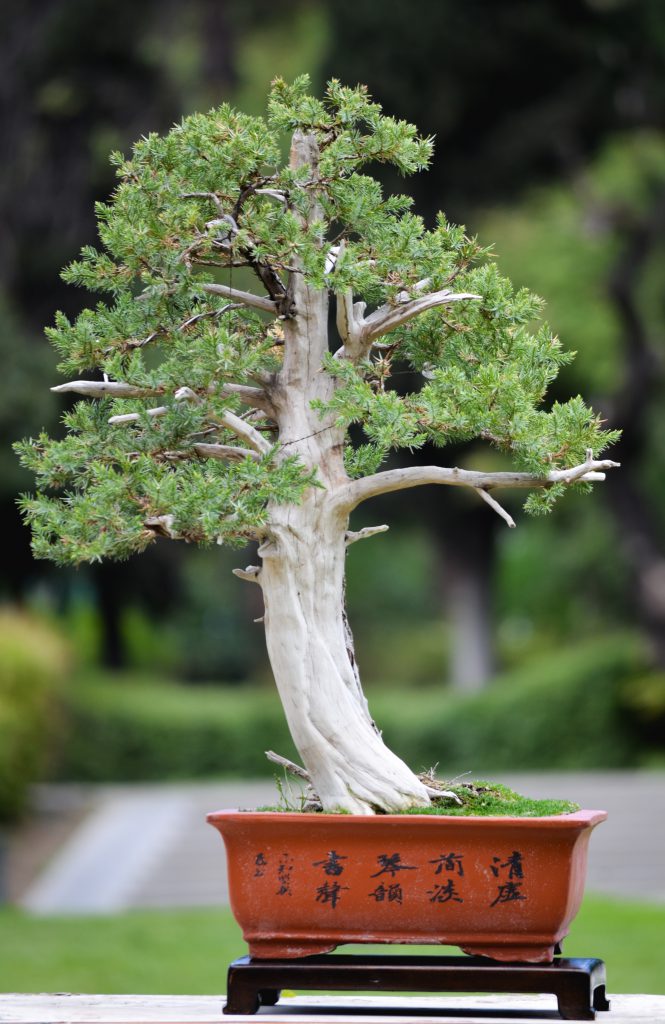Tanuki Bonsai is a live tree attached to deadwood. For this, a piece of dry wood is chosen (naturally damaged for effect), and a live plant is attached to it. First, a channel is made in the dead material, where the young tree is firmly attached. Typically, Bonsai specialists choose junipers for Tanuki because they are strong and have flexible bark. The live tree is attached with wire, and sometimes, as strange as it may sound, with nails or screws. After some time, the plant's trunk will mold to the shape of the channel, “embed” into it, and firmly adhere as if it were one solid tree. During the creation of Tanuki Bonsai, the shaping of the live plant is done in the usual manner.

Several years ago, I decided to create a Tanuki Bonsai, using a live juniper and a randomly spotted dried Caucasian spruce. I treated the dry tree with a special solution that prevents water from penetrating the wood. Then, I covered it with a mixture of sulfur and lime. I used wire and rubber bands for attachment. I planted it in a suitable container and started the initial shaping. After 2 years, I removed the bands.

I never considered creating such a "fake bonsai" a serious task. This juniper is my only attempt. I knew that in Japan, such works aren’t highly valued, and Tanuki doesn’t even make it to traditional bonsai exhibitions. But, a while ago, my friends visited Kunio Kobayashi’s Bonsai Museum and told me that many Tanuki were displayed in his garden, and they saw a large stock of dried trees behind the house for making such bonsais. If even such a great master doesn’t hesitate to create Tanuki, then perhaps this "fake bonsai" deserves to exist. After all, bonsai is entirely an illusion, like cinema or theater.

